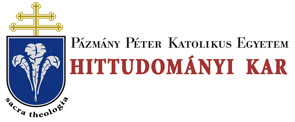Folia Canonica 10. (2007)
PROCEEDINGS OF THE INTERNATIONAL CONFERENCE - Szabolcs Anzelm Szuromi: Development of the Clerical Duties and Rights Based on the 11th-12th Centuries. Canonical Collections
DEVELOPMENT OF THE CLERICAL DUTIES AND RIGHTS 215 ministering the sacrament of baptism, and also of giving the homily which interprets the doctrine of the Church, but he can exercise this capacity only when the bishop is prevented, or if the priest owns permission from the competent bishop. The substantial difference between the degree of priest and degree of bishop is indicated well by Ans. 7. 120, which forbids the priests to celebrate high Mass, because the bishop has higher consecrational power than any other priests.55 Ivo of Chartres’s work56 and the Decretum Gratiani57 contain more detailed and sysematized discipline regarding the clerical duties and rights than Anselm’s Collection. The Ivonian Decretum, basicly in Book 6 speaks about clerics, their ordination, their correction and accusation. We can see similar contents in Book 3 of the Panormia and in Rubric 10 of the third part of the Tripartita,58 But many of the obligations of priests are listed in the description of administering the sacraments, which shows well how the stress is on the clerical duties in these collections. 55 Ans. 7.120: Sacerdotes quando Domino sacrificant non soli hoc agere debent, sed testes se- cum adhibeant, ut Domino perfecto in sacratis Deo sacrificare locis probentur. Ait namque auctoritas: Vide ne offeras holocausta tua in omni loco quern videris, se din loco quem elegerit dominus Deus tuus. Episcopus sacrificans testes habeat plures quam alius sacerdos. Thaner 414. 56 Erdő, P., Die Quellen des Kirchenrechts. Eine geschichtliche Einführung (Adnotatio- nes in lus Canonicum 23), Frankfurt am Main 2002.98-100. KÉry, L., Canonical Collections of the Early Middle Ages (ca. 400-1140). A Bibliographical Guide to the Manuscripts and Literature (History of Medieval Canon Law ), Washington, D.C. 244-260. Brett, M., Editions, Manuscripts and Readers in Some Pre-Gratian Collections, in CUSHING, K.G.-Gyug, R.F. (ed.), Ritual, Texts and Law. Studies in Medieval Canon Law and Liturgy Presented to Roger E. Reynolds (Church, Faith and Culture in the Medieval West), Aldershot 2004. 205-224. SZUROMI, Sz.A., Some observations on BA V Pal. lat. 587 as compared with other textual witnesses of Ivo's works, in SZUROMI, Sz.A. (ed.), Parare viam Domino. Commemorative Studies on the occasion of Rt. Rev. Polikárp F. Zakar OCist. 's 75" Birthday (Bibliotheca Instituti Postgradualis Iuris Canonici Universitatis Catholicae de Petro Pázmány nominatae III/7), Budapest 2005. 179-203. 57 WEIGAND, R., Zur künftigen Edition des Dekrets Gratians, in Zeitschrift der Savig- ny-Stiftungfür Rechtsgeschichte. Kanonistische Abteilung 83 (1997) 32-51. WlNROTH, A., The making of Gratian ’s Decretum (Cambridge Studies in Medieval Life and Thought : Fourth Series 49), Cambridge 2000. Larrainzar, C,,La ricerca attuale sul ".Decretum Gratiani ", in De León, E.-Alvarez de las Asturias, N., La cultura giuridico-canonica Medioevale premesse per un dialogo ecumenico, Milano 2003.45-88. VlEJO-XlMÉNEZ, J.M., La investigación sobre las fuentes formales dei Decreto de Graciano, in Initium 7 (2002) 217-239. VlEJO-XlMENEZ, J.M., La composizione dei Decreto di Graziam, in SZUROMI, Sz.A. (ed.), Medieval Canon Law Collections and European ius commune (Bibliotheca Instituti Postgradualis Iuris Canonici Universitatis Catholicae de Petro Pázmány nominatae III/8), Budapest 2006. 97-169. 5S BAV Reg. lat. 973, foil. 135rb-140rb: (Rubric) “De clericis ex eorum causis”; cf. BN lat. 3858, foil. 233r-244v: (Tit.) “De clericis”.
